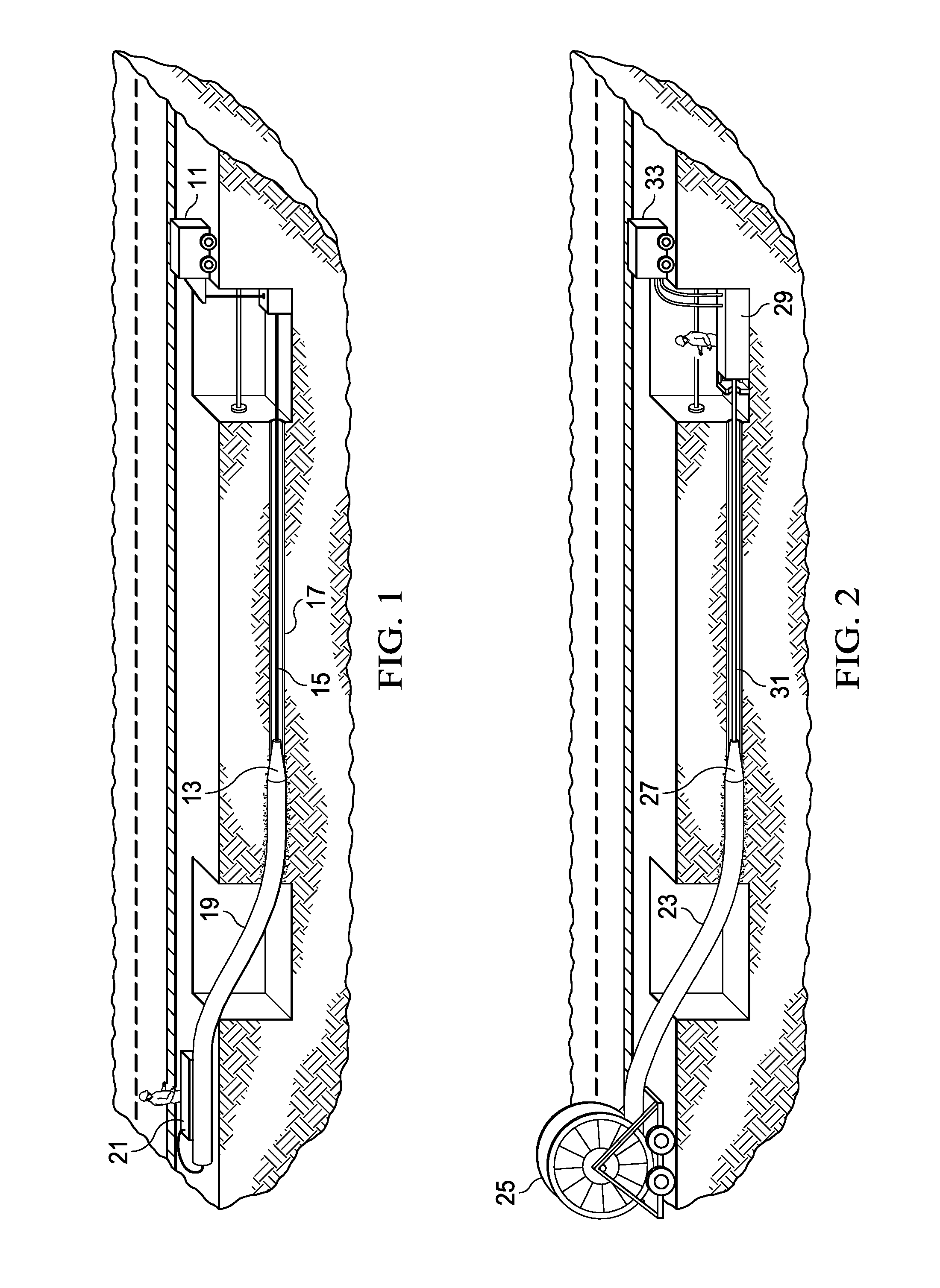Compositions and Methods for In-Situ Macro-Encapsulation Treatment of Friable Asbestos Fibers Generated by Trenchless Pipe Bursting of Asbestos Cement Pipe
a macro-encapsulation and asbestos fiber technology, applied in mechanical equipment, transportation and packaging, chemical equipment and processes, etc., can solve the problems of reducing the effective structural wall thickness and cross-section of the effective structural wall thickness and the end of the life cycle, corroding, cracking and breaking of the ac pipe, and reducing the effective structural wall thickness and cross-section. , to achieve the effect of high viscosity
- Summary
- Abstract
- Description
- Claims
- Application Information
AI Technical Summary
Benefits of technology
Problems solved by technology
Method used
Image
Examples
Embodiment Construction
[0027]The preferred version of the invention presented in the following written description and the various features and advantageous details thereof are explained more fully with reference to the non-limiting examples included and as detailed in the description which follows. Descriptions of well-known components and processes and manufacturing techniques are omitted so as to not unnecessarily obscure the principal features of the invention as described herein. The examples used in the description which follows are intended merely to facilitate an understanding of ways in which the invention may be practiced and to further enable those skilled in the art to practice the invention. Accordingly, the examples should not be construed as limiting the scope of the claimed invention.
[0028]The U.S. Environmental Protection Agency (EPA) makes the following distinction in regulating asbestos containing materials (ACM) under the National Emission Standards for Hazardous Air Pollutants (NESHAP...
PUM
 Login to View More
Login to View More Abstract
Description
Claims
Application Information
 Login to View More
Login to View More - R&D
- Intellectual Property
- Life Sciences
- Materials
- Tech Scout
- Unparalleled Data Quality
- Higher Quality Content
- 60% Fewer Hallucinations
Browse by: Latest US Patents, China's latest patents, Technical Efficacy Thesaurus, Application Domain, Technology Topic, Popular Technical Reports.
© 2025 PatSnap. All rights reserved.Legal|Privacy policy|Modern Slavery Act Transparency Statement|Sitemap|About US| Contact US: help@patsnap.com



